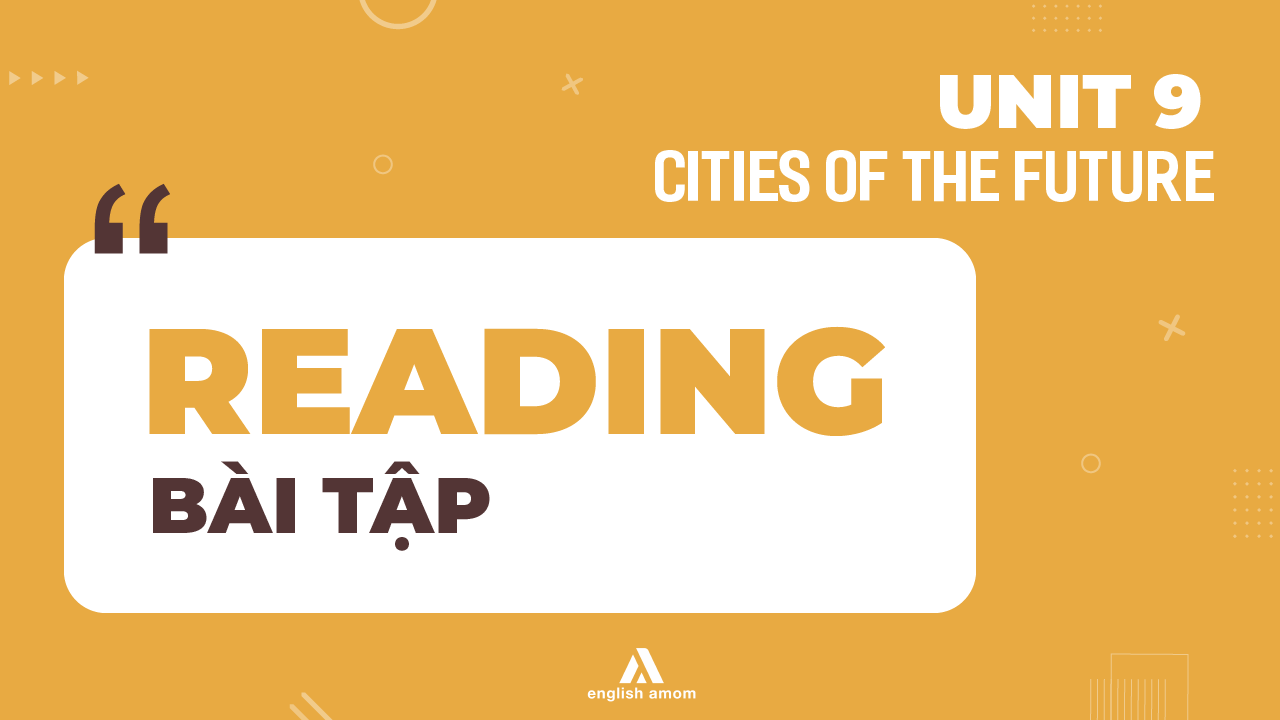
► Kênh hỏi đáp và giải thích thắc mắc kiến thức MIỄN PHÍ → truy cập LINK NHÓM: ENGLISH AMOM
► Kênh YOUTUBE hệ thống toàn bộ bài giảng CLIPS: truy cập LINK: ENGLISH AMOM CHANNEL
► Kênh TIKTOK: ENGLISH AMOM
1) Read the first part of the text about Barcelona and fill each gap with a word or a phrase from the box.
| plan | population | popular | urban | inhabitants | smart | ambitious | quality of life |
Barcelona, the second largest city in Spain, is one of the most (1) .............................. tourist destinations in Europe. It is known for its sunshine, architecture, and lively streets. The City Council plans to transform Barcelona into a (2) .............................. city, by having technology reach every neighborhood, balancing sustainable urban and economic development, and improving its inhabitants' (3) ..............................
One of its great achievements is the transformation of the 200-hectare Poblenou industrial area into the 22@Barcelona District, also known as the Innovation District. This is considered the most important project of (4) .............................. transformation in Barcelona in recent years, and one of the most (5) .............................. in Europe, with more than 200 million Euros invested in the infrastructure (6) .............................. The project was launched in 2000 and is still ongoing. As of December 2011, an estimated 4,500 new companies had moved to the district since 2000, an average of 545 per year. The (7) .............................. in 22@Barcelona has grown 22.8%, from 73,464 (8) .............................. in 2001 to over 90,000
ĐÁP ÁN:
| 1. popular | 2. smart | 3. quality of life | 4. urban | 5. ambitious | 6. plan | 7. population | 8. inhabitants |
2) Read the second part of the text and answer the questions.
Why is the 22@Barcelona District also called the Innovation District? Let's take a walking tour to find the answer to this question.
First, the digital bus stop, with its multifunctional features, is one of the prides of Barcelona. It not only displays real-time bus schedules but also offers tourist information, USB charging sockets and acts as a free WiFi station.
The City Council has also set a target for saving electricity. At night, the smart lighting system becomes less bright when there is no motion detected in the streets and lights up when people are around. This helps to save money and reduces carbon dioxide emissions.
Next is the smart waste collection system with smart rubbish bins which are connected to a vacuum network under the streets. When the bins are full, the sensors installed on them send information to the collection plant, and the waste is sucked through underground pipes. This system reduces noise pollution made by refuse lorries and keeps public spaces clean and odorless.
To encourage city dwellers to use bicycles, a bicycle sharing system was developed. It is designed to h people to travel short distances without consuming any energy. People pay an annual fee, get a special card, scan it at any of the 400 stations, check out a bike, then check it back in at the station closest to their destination. Most stations are located near other public transport stops or public car parks. What's more, with seven hours of sunshine a day, Barcelona has taken advantage of solar energy. All r large buildings such as offices, hotels, hospitals, gyms, or swimming pools use solar panels to produce their own hot water. This helps to reduce fossil fuel consumption and carbon dioxide emissions.
For over a decade, the old industrial district of Poblenou in Barcelona has undergone a dramatic rene to create a high-quality environment for working and living. The aim of upgrading an old place while maintaining its economic activity has been achieved. That is why the 22@Barcelona model is being applied to other areas of the city.
1. Why is Barcelona proud of its bus stops?
2. How does its lighting system save electricity?
3. How is the waste collected from the rubbish bins?
4. What has the City Council developed to encourage people to use bicycles?
5. How can the 22@Barcelona District reduce the use of fossil fuels?
6. Why is the 22@Barcelona model being applied to other areas of the city?
ĐÁP ÁN:
1. Because they are multifunctional.
2. The lighting system becomes less bright when there is no motion detected in the streets and lights up when people are around.
3. The waste is sucked up through the underground pipes and sent to the collection plant.
4. They have developed a bicycle sharing system.
5. It can reduce the use of fossil fuels by taking advantage of solar energy. The buildings there use solar energy to produce their own hot water.
6. Because Barcelona's project of creating a high-quality environment for working and living has been successful, and the aim of upgrading an old, industrial place while maintaining its economic activity has been achieved.
3) Look for the words or phrases in the two parts of the text which mean the following:
1. started (v)
2. approximate (adj)
3. having several different functions (adj)
4. pulled with great power and forced into or out of something (v)
5. improvement; a situation in which something is replaced or improved (n)
ĐÁP ÁN:
1. launched = started (v)
2. estimated = approximate (adj)
3. multifunctional = having several different functions (adj)
4. sucked = pulled with great power and forced into or out of something (v)
5. renewal = improvement; a situation in which something is replaced or improved (n)

